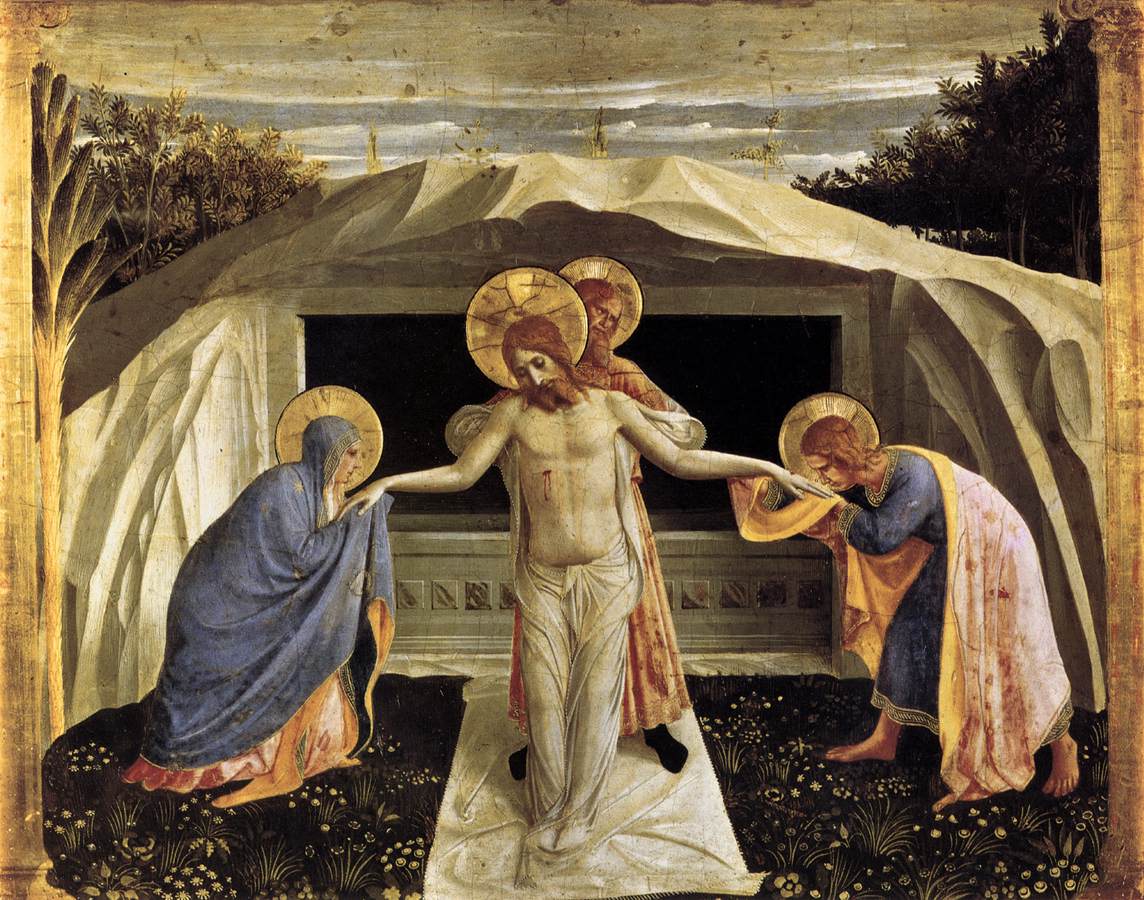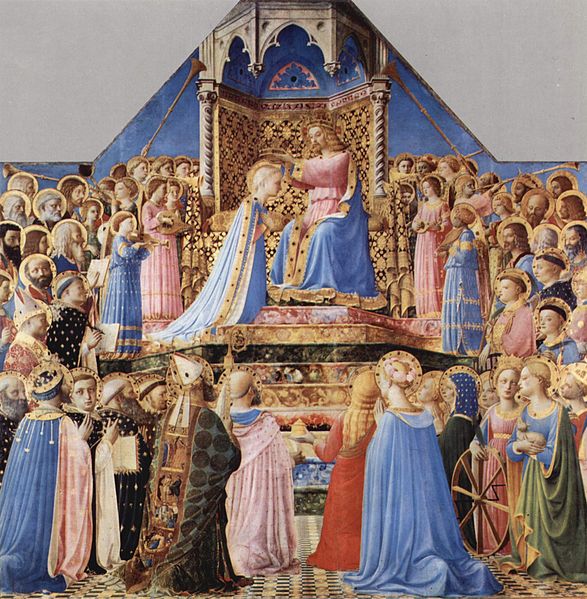- Goose
- Cogito ergo sum
 Offline
Offline 
- Registered: 1/29/2015
- Posts: 13,427
Fra Angelico
The artist and Dominican friar posthumously called Fra Angelico was known for most of his life as Fra Giovanni, the name he chose when he joined the convent of San Domenico in Fiesole. Not long after his death in 1455, he was praised as “the Angelic Painter,” elevating him to the status of the great Dominican theologian Thomas Aquinas, called the “Angelic Doctor.” His life and work have been celebrated for centuries, yet only recently has Fra Angelico’s fundamental importance in the development of European painting been fully appreciated. Paralleling the achievements of the slightly younger Masaccio (1401–ca. 1428), Fra Angelico pioneered many of the stylistic trends that distinguish the early Renaissance, including the rational treatment of pictorial space and the volumetric modeling of forms with light and shadow. At every stage of his career, in fact, Fra Angelico remained at the forefront of artistic innovation in Florence.
Born in the Mugello about 1390–95 and named Guido di Pietro, Fra Angelico probably received part of his artistic training in the workshop of Lorenzo Monaco (active 1390–1423), a Camaldolese monk and the leading painter and manuscript illuminator in Florence prior to his death. Unfinished drawings cut from a choir book for the monastery of Santa Maria degli Angeli may show some of Angelico’s activity during this apprenticeship with the older artist (1999.391; Statens Museum for Kunst, Copenhagen). Although Lorenzo Monaco executed the central narrative scenes, the closely observed plant forms that cover the initial letters reveal a level of naturalism foreign to his style. Instead, these curling acanthus leaves and open flowers, shaded and foreshortened for realistic effect, resemble the scrolling foliate patterns found on the engraved haloes and brocaded draperies in Angelico’s slightly later panel paintings. The young artist’s hand has also been detected in fragments from a pilgrimage roll—a kind of spiritual guide and travel manual—illustrating a journey to the Holy Land made by the Dominican lay brother Petrus de Cruce in 1417. The strong modeling of figures and spatial organization seen in two of the fragments (1972.118.260; Pushkin Museum, Moscow) may provide further evidence of Fra Angelico moving beyond the Late Gothic manner and technique of Lorenzo Monaco.
A document of 1418 recording payment to Angelico for a lost work confirms that by then his career as an independent artist was already underway. At some point between 1418 and 1422 he joined the Observant community of San Domenico in Fiesole. Many of Angelico’s commissions during this period came from Dominican institutions, which used his skill as an artist to advance the order’s preaching work. He painted three altarpieces for his own convent, including the principal altarpiece of the church, depicting the Virgin and Child enthroned with saints and angels (San Domenico, Fiesole). While the subject and format of San Domenico’s high altarpiece were traditional, Angelico’s novel arrangement of figures in the central panel to establish a nichelike space around the Madonna became a model studied by a number of contemporary artists, possibly including Masaccio. In 1501, the triptych was restructured to conform to current tastes. At a still later date, the original framing elements were dismantled, removing the panels painted with holy figures, such as the half-length Saint Alexander (1991.27.2) that occupied part of the left pilaster.
Dated on the basis of style to the same early phase of Angelico’s career, the panel depicting the Crucifixion in the Metropolitan Museum (43.98.5) seems to be the artist’s only signed work. The wealth of descriptive detail in the clothing and armor of the carefully foreshortened soldiers typifies Angelico’s approach to narrative painting. The subject, shape, and proportions of this panel, as well as the low viewing angle from which we see the underside of Christ’s garment, indicate that it may have once formed the pinnacle over the central panel of an altarpiece.
Masaccio’s groundbreaking use of mathematical perspective and his sculptural treatment of the human figure during the mid- and late 1420s powerfully affected Florentine art. Angelico adapted some of the younger painter’s innovations to refine his own advances toward the depiction of three-dimensional forms in logically constructed spatial settings. Following Masaccio’s premature death around 1428, Angelico emerged as the city’s most modern and sought-after artist. As his clientele quickly expanded beyond the Dominican community over the following ten years, he completed a large number of altarpieces, private devotional works, and fresco commissions. The allegorical figure of Justice in the Robert Lehman Collection (1975.1.264) may have been part of a model book used in Angelico’s workshop during this extremely active period. For medieval and early Renaissance artists, model books provided a repertoire of designs and preparatory studies that could be used to demonstrate the master’s style and technique to his assistants.
In 1435, the Dominican community in Fiesole to which Fra Angelico belonged took possession of the convent of San Marco in Florence. The climax of his artistic career came three years later with the commission from Cosimo de’ Medici to fresco the cloister, chapter house, refectory, and dormitory cells and corridors of the renovated convent. The Medici also chose Angelico to provide a painting for the high altar of the convent church, over which they had recently acquired patronage rights. In the resulting work (Museo di San Marco, Florence), Angelico again handled a conventional subject—the Madonna and Child enthroned with angels and saints—in a strikingly new and original manner. Abandoning the traditional Gothic altarpiece format that divided the Madonna and attendant saints into arched compartments, Angelico brought the figures together in a single square picture field, called a pala quadrata, and against a naturalistic landscape background. The unified spatial setting of the main panel and the depiction of the architecture in the narrative predella scenes demonstrate Angelico’s expert understanding of perspective.
Occupied with the extensive project at San Marco between 1438 and 1443, Fra Angelico produced relatively few independent panel paintings during this span. He moved to Rome in 1445 where, over the next four years, he frescoed a number of chapels in the Vatican Palace for Pope Eugenius IV and his successor Nicholas V. All that survives of this activity are the scenes from the lives of Saint Stephen and Lawrence in the Capella Niccolina, painted in 1447–48. Angelico served a two-year term as prior of his convent in Fiesole before returning to Rome in 1453. The damaged panel showing Christ on the Cross and various saints (14.40.628) dates to this final phase of the artist’s life, and, together with three other panels (Yale University Art Gallery, New Haven; Staatsgalerie Stuttgart; and private collection), may have formed the predella of an altarpiece that Angelico is said to have painted for the high altar of the Dominican church of Santa Maria sopra Minerva in Rome, where he was buried after his death in 1455.
Ross Finocchio
Robert Lehman Collection, The Metropolitan Museum of Art


We live in a time in which decent and otherwise sensible people are surrendering too easily to the hectoring of morons or extremists.
 1 of 1
1 of 1